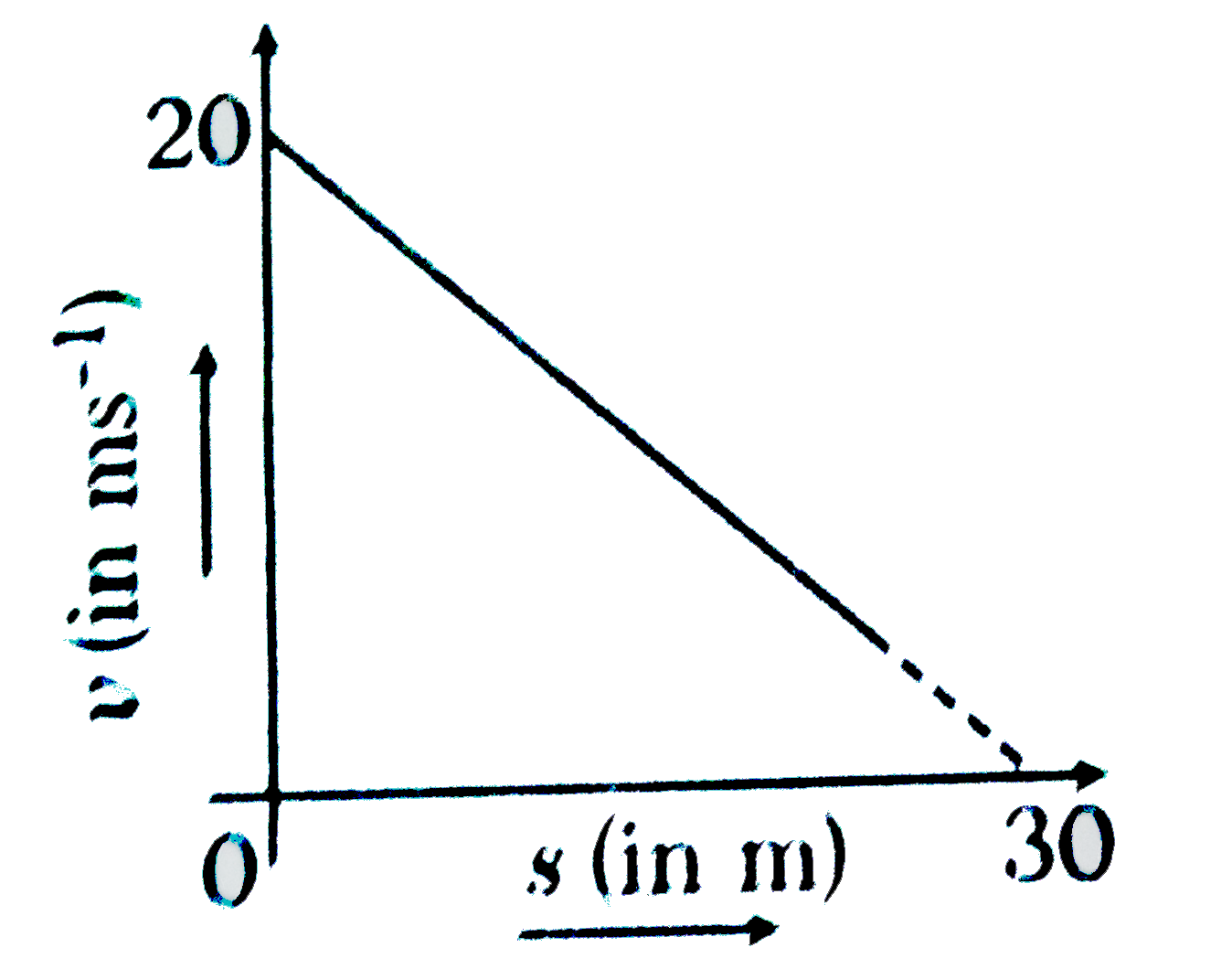An auto travelling along a straight road increases its speed from 30.0ms−1 to 50.0ms−1 in a distance of 180 m. If the acceleration is constant, how much time elapse while the auto moves this distance?
6.0 s
4.5 s
3.6 s
7.0 s
The correct Answer is:B
To solve the problem step by step, we will use the equations of motion.
Step 1: Identify the given values
- Initial speed (u) = 30.0 m/s
- Final speed (v) = 50.0 m/s
- Distance (s) = 180 m
Step 2: Use the equation of motion to find acceleration (a)
We can use the equation:
v2=u2+2as
Substituting the known values:
(50.0)2=(30.0)2+2a(180)
Calculating the squares:
2500=900+360a
Step 3: Rearrange the equation to solve for acceleration (a)
Subtract 900 from both sides:
2500−900=360a
1600=360a
Now, divide both sides by 360:
a=1600360
a=409m/s2
Step 4: Use the acceleration to find the time (t)
Now we will use the equation:
v=u+at
Substituting the known values:
50=30+(409)t
Step 5: Rearrange the equation to solve for time (t)
Subtract 30 from both sides:
50−30=(409)t
20=(409)t
Now, multiply both sides by 940:
t=20⋅940
t=18040
t=4.5seconds
Final Answer
The time elapsed while the auto moves this distance is 4.5 seconds.
---
- Initial speed (u) = 30.0 m/s
- Final speed (v) = 50.0 m/s
- Distance (s) = 180 m
We can use the equation:
v2=u2+2as
(50.0)2=(30.0)2+2a(180)
2500=900+360a
Subtract 900 from both sides:
2500−900=360a
1600=360a
a=1600360
a=409m/s2
Now we will use the equation:
v=u+at
50=30+(409)t
Subtract 30 from both sides:
50−30=(409)t
20=(409)t
t=20⋅940
t=18040
t=4.5seconds
The time elapsed while the auto moves this distance is 4.5 seconds.
Topper's Solved these Questions
- BOOK - NCERT FINGERTPS ENGLISHCHAPTER - MOTION IN A STRAIGHT LINEEXERCISE - RELATIVE VELOCITY18videos
MOTION IN A STRAIGHT LINE
- BOOK - NCERT FINGERTPS ENGLISHCHAPTER - MOTION IN A STRAIGHT LINEEXERCISE - HOTS10videos
MOTION IN A STRAIGHT LINE
- BOOK - NCERT FINGERTPS ENGLISHCHAPTER - MOTION IN A STRAIGHT LINEEXERCISE - ACCELERATION19videos
MOTION IN A STRAIGHT LINE
- BOOK - NCERT FINGERTPS ENGLISHCHAPTER - MOTION IN A PLANE EXERCISE - Assertion And Reason15videos
MOTION IN A PLANE
- BOOK - NCERT FINGERTPS ENGLISHCHAPTER - OSCILLATIONS EXERCISE - Assertion And Reason15videos
OSCILLATIONS
Similar Questions
The velocity of an object increases at a constant rate from 20 m s−1 to 50 m s−1 in 10 s. Find the acceleration.
View SolutionA vehicle moving in a straight road has its speed changed from 5 m/s to 8 m/s in 2 sec. What is its average acceleration ?
View SolutionA car moving on a straight road accelerates from a speed of 4.1 m/s to a speed of 6.9 m/s in 5.0 s. What was its average acceleration?
View SolutionA body is moving vertically upwards. Its velocity changes at a constant rate from 50m s−1 to 20m s−1 in 3 s. What is its acceleration ?
View SolutionA car is travelling at 20 m/s on a circular road of radius 100 m. It is increasing its speed at the rate of 3 m/s2. Its acceleration is
View SolutionA motor car travelling at 30m/s on a circular road of radius 500m. It is increasing its speed at the rate of 2ms−2. What its accleration at that instant ?
View SolutionIf the velocity v of particle moving along a straight line decreases linearly with its displacement s from 20ms−1 to a value approaching zero at s = 30 m, then acceleration of the particle at v=10ms^(-1) is
 View Solution
View SolutionAn express train moving at 30 m/s reduces its speed to 10 m/s in a distance of 240 m. If the breaking force is increased by 12.5% in the beginning find the distance that it travels before coming to rest
View SolutionA particle travels in a circle of radius 20 cm at a speed thast uniformly increases. If the speed changes from 5.0 m/s to 6.0 m/s in 2.0s, find the angular aceleration.
View SolutionA particle travels in a circle of radius 20 cm at a speed thast uniformly increases. If the speed changes from 5.0 m/s to 6.0 m/s in 2.0s, find the angular aceleration.
View Solution

